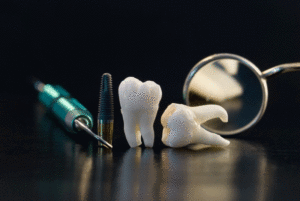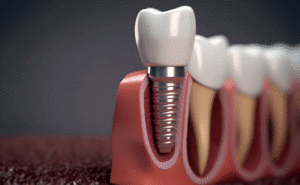Dental Crowns are tooth-shaped caps that are designed to fit over an existing tooth as a means of restoring its size, strength and appearance. They’re necessary in a variety of situations, which include protecting a weak tooth, restoring the appearance of a broken tooth, to hold a dental bridge in place, to cover a dental implant and to even make a cosmetic alteration.
However, like many dental apparatuses, there’s a right and wrong way to care for a dental crown to ensure that it lasts up to its maximum potential – and much of this proper care has to do with the foods that you consume with one. After all, most crowns are expected to last anywhere from five to 15 years. Here’s a closer look at the foods to avoid with a dental crown in place:
Foods to avoid with dental crowns
Generally speaking, if you have a dental crown, you should avoid chewy and sticky foods, as these have the potential to grab and pull at the crown, which in turn can directly impact the overall life of the crown. Chewy and sticky foods to avoid include the likes of:
- Gum
- Caramel
- Certain candy (i.e. taffy, Starburst, Swedish Fish, Sour Gummies, etc.)
- Raisins
In addition to foods that are chewy and sticky, those that are hard should also be avoided. Why? Because they have the potential to break, crack or damage the crown based on their hard complexion. These foods include the likes of:
- Raw vegetables (i.e. carrots, celery, etc.)
- Popcorn
- Certain candies (i.e. jawbreakers, suckers, etc.)
- Ice (but only if you chew on it)
Caring for crowns
Aside from watching what you eat, there are several other ways to properly care for crowns to ensure they last their projected lifetime. These tips include:
- Chewing food on the side of your mouth that doesn’t have the crown. This is especially important in the days after receiving the crown, when the cement is still hardening and the crown is still settling. Additionally, the mouth may be sensitive in this area in the days after having the crown administered.
- When flossing, instead of lifting the floss out of the gaps between each tooth, slide it out. Lifting it out could potentially do damage to the crown.
- Proper oral hygiene: Don’t ignore your brushing or flossing, even with a crown. Dentists recommend that you brush at least twice per day and floss at least once per day to ensure good oral health. Brushing and flossing is especially crucial around the crown area itself – specifically where the gum meets the tooth. Just because there’s a crown capped over a tooth doesn’t mean that this area of the mouth is immune to gum disease and further damage.
Lastly, be sure to see your dentist for regular professional cleanings – at least once every six months – to ensure that your teeth, and crown, are in good working order. For more information on dental crowns and how to properly maintain and care for them, contact our doctors, Dr. Richard Caven, Dr. Shelby Denman, and Dr. Stephen Carpenter, by calling our Caven Dental office in Jacksonville, FL, to schedule a consultation today!



